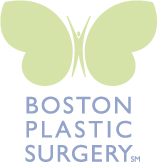Paying For Your Breast Augmentation
Posted on January 14, 2013 | by Boston Plastic SurgeryOne of the final steps in the process before undergoing a breast augmentation is discussing the costs and payment options with your surgeon.
Understanding the costs associated with breast augmentation, the insurance implications, and the financing options your surgeon can make available to you is vitally important before you finalize your procedure.
Costs of Breast Augmentation
As with any other type of medical procedure, breast augmentations have a number of things that make up the total cost of the procedure. Variables like geographic location, your surgeon’s experience with the procedure and how long they’ve been practicing can affect the fees.
Other cost considerations include hospital fees, the cost of the implants, anesthesia, prescriptions/medications, medical tests, and any supportive clothing you may need for after the procedure.
According to the American Society for Aesthetic Plastic Surgery (ASAPS), the 2011 national average for surgeon fees were $3,694 for a breast augmentation with silicone gel implants and $3,308 for a breast augmentation with saline implants.
While the figures above don’t cover all the costs associated with the procedure, they provide a good baseline to give you an idea of what to expect when you speak with your doctor.
Discussing Payment Plans With Your Surgeon
Because of the exclusion of cosmetic procedures by many health insurance companies, many doctors have put together a multitude of payment options for their patients. Aside from the typical cash, check, or credit card, many doctors have set up financing plans for their patients.
By partnering with specific companies, like Care Credit, surgeons have created a way for patients who otherwise couldn’t afford their procedures out of pocket to be able to break the cost into easy monthly payments.
If you’re interested in learning more about breast augmentation or your financing options, contact Dr. Fouad Samaha online, or at his Quincy, MA location.
Sources: ASPS and BreastImplantSafety.org
